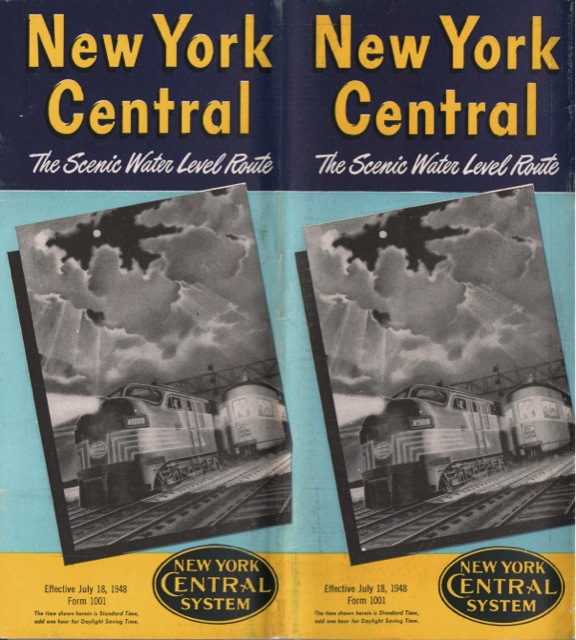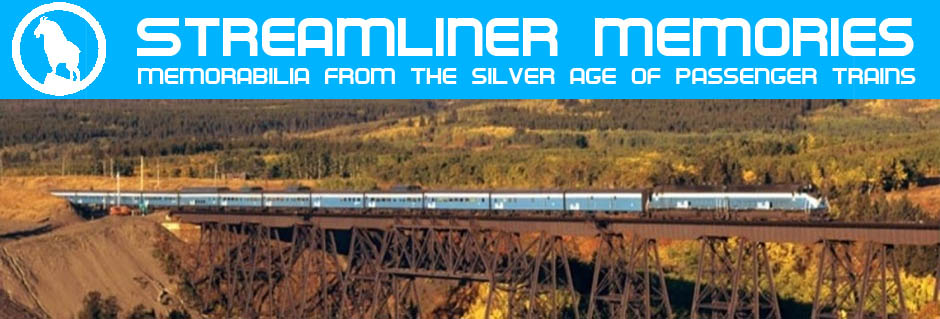Between 1938 and 1948, New York Central’s timetable grew from 32 to 52 pages, mainly because after 1942 it combined the Big Four, Boston & Albany, Michigan Central, and Pittsburgh & Lake Erie timetables into that of the parent road. This timetable reveals slightly lower frequencies than in 1938, but still plenty of trains, including 10 daily trains each way between New York & Chicago; six between Chicago & Cincinnati; five between Cincinnati & Cleveland; and four between New York & St. Louis.
 Click image to download a 36.5-MB PDF of this timetable.
Click image to download a 36.5-MB PDF of this timetable.
This timetable has a Diesel on the cover instead of one of the Central’s streamlined steam locomotives. Diesels had replaced steam in hauling the 20th Century Limited in 1945, but a steam locomotive remained on timetable covers until December, 1947. The back cover advertised the 1948 Chicago rail fair.
Also unlike pre-war and wartime timetables, this one advertised through sleeping cars to the West Coast via the Chief, Los Angeles Limited, Golden State, San Francisco Overland, and Exposition Flyer. Each of these connections involved a five-hour layover in Chicago, partly to shunt the Pullmans from New York Central’s LaSalle Street Station to whatever station the connecting train left from but partly due to the arrival and departure times of the trains. Ironically, the longest layover was with the westbound Golden State even though that train also used LaSalle Street Station; the layover eastbound, however, was only two hours.
In competition with B&O, the timetable also advertised connections with Missouri Pacific, Frisco, and MKT trains to Dallas, Houston, Oklahoma City, and San Antonio. Unlike the B&O, which had through cars, passengers on the New York Central had to make across-the-platform transfers at St. Louis.
